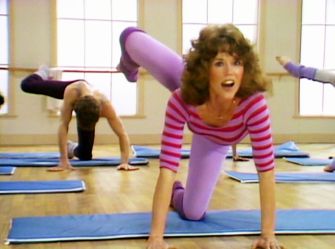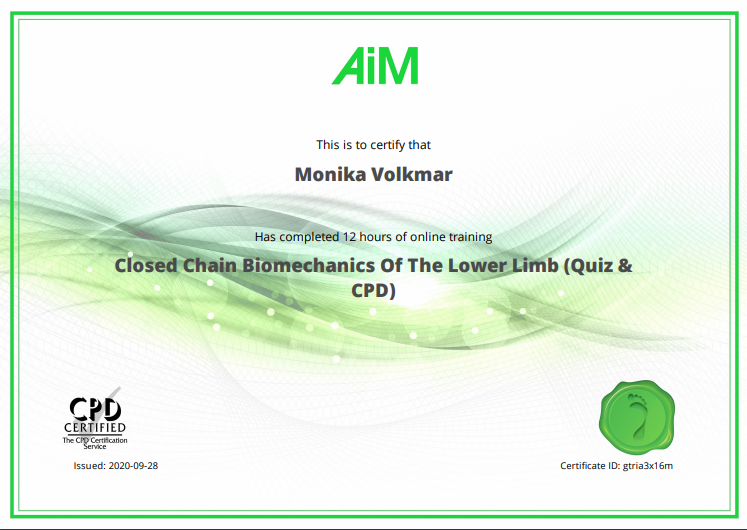
Every month I do a free movement session to help you understand a part of your body better.
Friday Nov 20th the topic of the monthly Movement Nerd Hangout was Wake Up Your Butt.
Before I go on and on in typical long-winded Monika fashion, check out the full 75ish minute session on Youtube:
SIDE NOTE: Interestingly, despite doing very little to promote it, this hangout, and being very, very tired on go-day, this session got the most positive response and highest attendance to date. Must be the magical allure of the glutes. After all, who can resist the promise of a stronger butt, more functional butt, and less irritating pain in the butt.
The rest of this blog post will be the technical/conceptual summary of the session.
Let’s begin with some basic functional anatomy…
Anatomy of your butt 101
(excluding sphincters, pelvic floor muscles, and your butt’s role in elimination…)
You have three glute muscles: Glute maximus, glute medius, and glute minimus.
Not to be confused with this silly depiction of the glutes show below.

The glute muscles cross the hip joint, managing the motion of the pelvis and the femur.
The hip joint has lots of triplanar motion, which the glutes respond to by either shortening or lengthening. Here’s what the glute max does during each hip motion:
| SAGITTAL PLANE | GLUTE MAX STATUS |
| Flexion | Long |
| Extension | Short |
| FRONTAL PLANE | |
| Adduction | Long |
| Abduction | Short |
| TRANSVERSE PLANE | |
| Internal rotation | Long |
| External rotation | Short |
However, glutes become tricky when we look at what they actually do in gait. During some phases the glutes can be long in two planes, and yet short in another! Muscles can be confusing…
For example, in the loading phase of gait- when the front foot pronates and our entire bodyweight is on it (aka suspension phase, in AiM) we have the following:
| SAGITTAL PLANE | GLUTE MAX STATUS |
| Flexion | Long |
| FRONTAL PLANE | |
| Adduction | Long |
| TRANSVERSE PLANE | |
| External rotation | Short |
And so at this point we shall switch gears from the traditional “what does that muscle do?” conversation…
Gary Ward’s First Two Rules of Motion
If you haven’t already read What The Foot, this is a good place to start to learn more about Gary’s 5 rules of motion.
The first two rules are very important for our glute discussion:
Rule 1: Joints act, muscles react
Rule 2: Muscles lengthen before they contract.
In gait, our muscles react to the movement of our bones and joints as we journey forward through space, from one foot to the next.
Walking is a predominantly momentum-based activity in which the role muscles contribute most strongly is to decelerate joint movement- Load up muscles like a slingshot, which then contract to move the bones in the opposite direction, then go on slack to let momentum do the rest.
From this perspective, the solution to a sleepy butt is not just to squeeze it.
In gait, we do NOT want our muscles to only be concentrically contracting (shortening) to pick up our limbs and ambulate, which is a more energetically costly walking strategy. And we definitely don’t want to micro-manage every muscle contraction consciously.
Just think about the last time you had to walk in knee-high snow, and the feeling of having to contract your hip flexors more than necessary with each step. Tiring!
Unless you have a pair of snowshoes…
Think of muscles as managers of joint motion.
In gait, joints act, muscles react: Muscles manage the joint they cross by decelerating the motion of the bones that just moved into them, and sending them back the opposite direction, which generates our forwards locomotion.
In efficient gait, glutes come alive, unconsiously, when the hip moves in such a way that lengthens them, providing the stimulus to contract back in the other direction.
This is important because each footstep you take contains all the building block joint motions that underlie every other movement pattern a human can do. If your hips can move with all their innate options, and glutes can load unconsciously while you walk, trust that your body has a much better chance of accessing them in all other activities.
Like deep-snow country snowshoeing
Now let’s apply this to the glutes, which manage the motion available at the hip.
What motions of the hip do the glutes manage?
In any textbook or anatomy app, you’ll get the list of concentric joint actions a muscle does- What happens to the joint when that muscle shortens.
But you’ll probably never get the list of joint actions that muscle decelerates.
Key point: In gait, a muscle’s most important role is what it does eccentrically- A contraction while the muscle is lengthening.
Key question: What joint actions causes eccentric loading of the glutes?
Concentrically, the textbooks tell us that, at the hip joint, glute max will do:
- Extension
- Abduction
- External rotation
Which means that to eccentrically load the glute max (in accordance with the rules joints act, muscles react, and muscles lengthen before they contract), we need the hip to do the opposite:
- Flex
- Adduct
- Internally rotate
These three motions would lengthen glutes, which would then stimulate them to contract and create extension, abduction, external rotation, pushing us along our merry way.
So…
Flexing the hip gives no option but for glute max to generate hip extension
Adducting the hip gives no option but for the glute max to generate hip abduction
Internally rotating the hip blah blah blah hip external rotation.
So the question is not, “how many reps of side-lying clamshells should I do to activate my glutes?”, but rather “Can both of my hip joints access flexion, adduction, and internall rotation?”
Because if the hip joint can do those three motions, the glutes should have no option but to contract!
Now of course there are many more muscles that cross the hip, which means we have a choice: Try to micromanage individual muscles OR, move the one hip joint in such a way it stimulates all said muscles to perform their role.
In Gary Ward’s words (from the Closed Chain Biomechanics of the Lower Limb course):
Looking at a single joint- the hip, will give us movement in every single muscles that is attached to it. So rather than thkning of working with 10 different muscles, we can still just focus on quality of movement in one joint.
It’s a great course FYI. And you can get continuing education credits at last!
Why do butts go to sleep?
The million dollar question: Why did your butts go “asleep” in the first place?
“Sleepy glutes” is a popular buzz term, and I am now guilty of propagating it (#marketing, yo). Calling any muscle “asleep” is a bit of an over-simplification.
Muscles don’t “sleep” exactly. They don’t have a REM cycle 😉 But they do adhere to the “use it or lose it” principle, and “joints act” is the “use it” that keeps us from losing our glute reaction.
Muscles “fall asleep” when we stop moving the joints they cross! Stop giving them anything to do, and they stop doing anything.
Most people’s technical solution to “waking up” a muscle is to repetitively contract it. Endless glute-squeezy activation drills. Thank you Jane Fonda.

However, you can squeeze your butt all day and it might not result in any actual new joint motion.
Try it: You can squeeze your butt without moving your hips. But if you move your hip, you give your glutes no option but to respond.
Give the glutes no option but to contract
Imagine you’re 8 years old again, and it’s Christmas morning.
You’re wide awake and ready to open the presents under the tree, but Dad’s still half asleep because it’s at 5am on a Sunday and he just came back from working in the coal mines to buy you said presents (you ingrateful punk).
But you don’t care about Dad’s back-breaking manual labour, so you poke Dad over and over hoping he’ll wake up so you can open presents and eat candy for breakfast.
Well, poking Dad more won’t make him want to wake up, he’ll just get pissed off and want to stay in bed. Poking doesn’t provide the right incentive to change Dad’s behaviour.
However you can give him no option but to wake up, by setting the Christmas tree on fire.
That’s the action that will stimulate sleepy ol’ Pops to move!
Maybe this is a bad analogy, but what we want to do is stop poking Dad incessantly (squeezing glutes over and over), and instead create an environment in which he is given no choice but to wake up. Cruel… But does the job 😉
So how do we light that Christmas tree fire for your glutes? Create an environment that gives your glutes no option but to contract.
Hip joint acts, glutes react.
If the hip joint isn’t actually moving, the glutes won’t respond. This has nothing to do with how flexible or stiff you are. No actual motion of the hip= no glute reaction.
Stop blaming your muscles
Far too often we blame muscles as the primary cause of our problems. But(t) unless there was direct trauma generating scar tissue (like sitting on a nail, a surgery, etc) it’s probably not orignally the muscle’s fault.
Even a muscle strain might not originally be the muscle’s fault. After all, it was only doing what the joint’s access to it’s own motion permitted it to do.
Remember, in gait, the muscle’s role is to simply react to what the skeleton is capable of doing.
So don’t blame your glutes, they’re doing the best they can given their environment (aka the joint’s movement potential). Ask instead, “What might be preveniting my hip from moving?”
Well I don’t know what might be preventing YOUR hip joint from accessing it’s movement potential.
It could be a learned movement patterning based on a sport or skill.
Maybe an ankle sprain that makes you not want to put weight on that leg- and if you can’t put weight on a leg when you walk the hip joint isn’t going to move.
Or maybe you just sit a lot and literally just don’t move your hips.
Whatever the case may be, I hope this inspires you to to think and work with your hips and glutes in a new way.
Conclusions?
Muscles can be confusing, but if you can get your hip to move in all three planes, your glutes will have no option but to contract.
In gait, we are more interested in eccentric muscle action, because this is what most effectively stimulates a muscle to contract and move us forward.
Gait contains all the building block joint motions. Accessing glute function in the context of gait, by virtue of quality hip movement, opens the door of opportunity to use dem glutes in all other activities and exercises, unconsciously.
Ask not, how mnay reps of X-Magical-Glute-Exercise I should I do, and instead, seek to understand what could be preventing your hips from accessing tri-planar motion?
Now go any do all the glute things your heart desires 🙂 Do your squats, and glute bridges, barbell hip thrusts, clamshells, and side-lying leg raises, and trust you actually got glutes to squeeze.
Did you do the full movement session? Did you find it useful?
Did you find your glutes in all of the exercises? Was there one plane of motion that was harder than the other? Easier on one leg than the other? Shoot me an email or leave a comment below to share your experience 🙂
Let me know how it went 🙂



